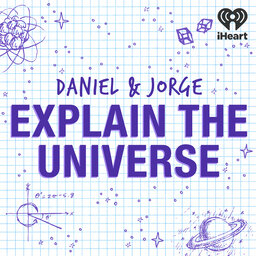Listener Question 10: Particles, stars and universe-sized black holes!
Daniel and Jorge answer listener questions about the smallest, biggest and cataclysmic-ist things in the Universe!
Learn more about your ad-choices at https://www.iheartpodcastnetwork.com
See omnystudio.com/listener for privacy information.
 Daniel and Jorge Explain the Universe
Daniel and Jorge Explain the Universe


